Reviews
George Roy Hill
USA, 1972
Credits
Review by Evan Kindley
Posted on 31 August 2010
Source Universal Studios DVD
Categories Favorites: Time Travel
At the start of Slaughterhouse-Five, a middle-aged World War II veteran with the still-juvenile name of Billy Pilgrim (and a wrinkled baby face to match) looks up from his typewriter and straight into the camera’s eye. A close-up of the letter he is composing neatly delivers the premise of the film we are about to watch: “I have come unstuck in time.” Time travel in Slaughterhouse-Five is, like so much else in life, utterly random, neither technologically facilitated - there’s no time machine involved: Billy simply “comes unstuck,” for unknown reasons - nor voluntary. Billy’s voyages, here given the echt-sixties expression of “time tripping,” plop him into moments from his life in random sequence, a kind of Quantum Leap within the parameters of his own biography. Sometimes he’s aware that he’s experienced these moments before, and can even predict what comes next; more often, he simply lives out his circumstances as if for the first time.
While these moments occasionally come from Billy’s childhood before the war or his postwar adult life as a successful middle-class optometrist - his father throwing him into a swimming pool, for example, or his election to the presidency of the Lions Club, or the embarrassment of walking in on his teenage son masturbating - the bulk of them relate to his experiences during the Allied firebombing of Dresden in 1945. For Vonnegut, Billy’s time tripping is first and foremost a narrative strategy, a way of ordering an experience so horrendous that it makes a mockery of conventional forms of narration. Slaughterhouse-Five was the final product of a decades-long attempt to write about his own experience of the Dresden bombing. The text of Slaughterhouse-Five is “so short and jumbled and tangled … because there is nothing intelligent to say about a massacre. Everybody is supposed to be dead, to never say anything or want anything ever again.” (The book’s challenge, to borrow a later Vonnegut title, is how to chronicle “Armageddon in retrospect.”)1 But while Vonnegut presented the novel’s fractured structure as a deliberate sabotage of the well-made story (significantly, he wrote it while teaching at the Iowa Writers’ Workshop, epicenter of American literary formalism), there are also metaphorical resources tapped by Slaughterhouse-Five’s experimentation with chronology. Most obviously, Billy’s time tripping stands in for the distortions of shell shock or PTSD, the famous “flashbacks” - a word that had a psychological sense before it became common cinematic parlance - whereby military veterans involuntarily relive their traumatic wartime experiences. And, at an even more basic level, the trips also suggest the simple disorientation of a soldier stationed in a foreign country, and the uncanny sensations associated with being back - safe? - at home again.
But back to Billy Pilgrim. Trained as a chaplain’s assistant rather than a soldier, he is captured by German soldiers during the Battle of the Bulge and transported, along with a number of other American POWs, to the city of Dresden, where they are temporarily housed in a disused slaughterhouse (Schlachthof-fünf, or “Slaughterhouse-Five”). When they first arrive, the American soldiers are paraded through the streets, where they are confronted with a bewildering variety of stimuli: German women blow them kisses, Dresden’s gargoyles glower down at them, old people slap them in the face, and SS officers snap photos for propaganda purposes (a moment which triggers a brief time trip to Billy and his wife Valencia posing for their wedding pictures). Since Dresden is not supposed to be a military target, the Americans feel relatively safe in their captivity, but as it transpires the city is severely bombed. Just before the air raid begins, the captured soldiers are hustled underground into a meat locker turned makeshift air-raid bunker; when they ascend, they find the city completely devastated.2 Still under Nazi control, Billy and his fellow soldiers are forced into cleaning up after the Dresden bombing, excavating corpses and stacking them in massive piles and later cremating them with flamethrowers until the city is finally liberated by the Russian army a few days later.
The almost unbearable irony of the situation is that Billy’s worst wartime ordeal is at the hands of the Allied rather than the Axis forces - “friendly fire,” in other words, to use a later term that Vonnegut would have savored - a turn of events that makes his congenital skepticism about war’s grander purposes even stronger. This is the part of the novel that Hill gets exactly right. In the introductory chapter to Slaughterhouse-Five, Vonnegut promises the wife of an old war buddy that, in the book he’s writing, “there won’t be a part for Frank Sinatra or John Wayne.” The book’s subtitle, The Children’s Crusade, is meant to emphasize that the soldiers in Dresden were not full-fledged men but callow, inexperienced children themselves. Hill gets this immature atmosphere across, and he also preserves another unusual detail of the book: its reluctance to demonize the German soldiers. While it’s impossible to watch footage of Nazi soldiers herding people into boxcars and organizing them in camps without thinking of the Holocaust, the parallel is subtly underplayed, and the German officers depicted in the film aren’t particularly brutal towards their charges. The Nazis in Slaughterhouse-Five are neither pure evil nor figures of fun nor really humanly distinct at all: they have a job to do and they do it, and surprisingly little moral judgment is offered on the situation. In times of war, the film makes clear, everyday ethics and attempts to understand the other are suspended along with everything else, a deal mutually agreed to by both parties: “No talking to Germans,” the commanding German officer instructs his American prisoners. “When the war is over, we’ll talk.”
Adapting Slaughterhouse-Five for the screen was a task at once difficult - the book, though short, is dense, and heavily reliant on narrative voice as opposed to plot or dialogue - and obvious: the fractured time structure is in a way made for the movies, which perfected the arts of montage and cross-cutting long before they became commonplace in literary works. And though of course Alain Resnais had already done this over a decade earlier with Last Year at Marienbad, it’s certainly possible that Slaughterhouse-Five, qua book and/or film, had an influence on later pretzel-logical films from Memento and Pulp Fiction to Eternal Sunshine of the Spotless Mind and Thirty-Two Short Films About Glenn Gould. (Gould, interestingly, performed the music for Slaughterhouse-Five.) Unfortunately, though, George Roy Hill’s film does little more than prove that such an adaptation is possible: it adds nothing other than some historically convincing production design to the basic story, and it lacks the preternatural tonal balance of Vonnegut’s text, which somehow blends memoir, science fiction, black comedy, metafictional experiment, and character study without coming off like a hodgepodge. Hill’s film, unfortunately, is exactly that. 3
The problems begin with the casting of Michael Sacks as Billy Pilgrim. (To be fair, the other actors aren’t much better; one thing every phase of Billy’s life seems to have in common is population by hammy 70s character actors.) Though forced by his condition to relive moments of extreme danger and emotional significance, Billy’s not a hero, nor is he really a reflective sort: to be honest, he doesn’t seem to have much interiority at all. It’s partly - and here, admittedly, Hill is following Vonnegut, who characterizes Billy as “funny-looking” - that he’s not particularly handsome, which in Hollywood is often how both courage and a rich inner life are often indicated. As a young man, with his thin sandy hair, elongated simian features and prominent dimpled chin, he looks a bit like Ed Begley, Jr.; the more old-age facial putty the filmmakers apply, the closer he edges toward James Woods. Anyway, suffice it to say that Sacks is not only no Frank Sinatra or John Wayne, he’s not even much of a Billy Pilgrim, and while his blankness complements the passivity of the character (and Vonnegut’s essentially fatalistic view of life), it creates a serious charisma vacuum that, in the novel, is filled by the narrator’s generous philosophical digressions. Thus it comes about that, while relatively faithful to the book in terms of plot, Hill’s movie feels so much more earnest and flat-footed; Vonnegut’s signature black Midwestern humor doesn’t really come through, though some of his sincere feeling for men4 of all walks of life does.
The second major problem is built right into the source material, and that’s the middle-aged Billy’s sudden abduction and transportation to the planet Tralfamadore, where a race of fourth dimension-inhabiting aliens, invisible to the human eye (which is itself a cheat: in Vonnegut’s novel they’re described as looking like toilet plungers!) 5, recreate a middle-class American living room inside a geodesic dome, exhibit him as a zoological specimen within it, and beam in a porn starlet named Montana Wildhack from a hot tub in Palm Springs to mate with him. The Tralfamadorians also inform him, somewhat ponderously, of the simultaneity (and, thus, preordination) of all temporal events and the theory of strict ethical determinism that follows from this fact: “only on Earth,” they claim, “is there any talk of free will.” These sci-fi elements, which run all throughout the book, are mostly consigned to the film’s last fifteen minutes. (The science fiction writer Kilgore Trout, another Vonnegut alter ego who appears in several of his books and who plays a major role in the original novel, is also missing.) It might have been a better idea to eliminate them entirely, leaving Billy’s time tripping totally unexplained: the movie doesn’t quite survive its transition from a tricked-out wartime drama to a middle-aged SF geek’s wet dream. (Sorry, Kurt, gotta call ‘em like I see ‘em.) The scenes on Tralfamadore, loopily effective in Vonnegut’s hands, are merely ridiculous in Hill’s: imagine the surreal beauty of Kubrick’s “Jupiter and Beyond the Infinite” sequence from the end of 2001 devolving into a weekly domestic sitcom, complete with wacky extraterrestrial neighbors.
In the end, the pressures of the “well-made” narrative that Vonnegut felt impelled to resist as a novelist manifest themselves again in Hill’s every instinct as a filmmaker. Hill, after all, was coming off Butch Cassidy and the Sundance Kid, as mildly subversive a take on the Western genre as Slaughterhouse-Five was on the war movie, and he would go on to make The Sting, The Great Waldo Pepper, Slap Shot, and The World According to Garp: decent movies all, but decidedly entertainments rather than philosophical statements—and Vonnegut’s book is, practically by design, a failed entertainment. If you take the philosophy out of it, you’re left with plenty of memorable details but a not very satisfying story. Slaughterhouse-Five belongs in the annals of closely observed, anti-jingoistic films about the confusions and contradictions of war, and probably deserves a place near the top of the heap of noble and interesting failures adapted from Kurt Vonnegut novels. Sadly, it isn’t more than that. So it goes.
- Beginning the film with Billy at the typewriter has the effect of making Billy’s old age the story’s implicit focal point, an orienting technique the book eschews. In the novel, there is no one point which represents “the present”: Billy’s first time trip occurs while he’s still in Dresden, and the story of Slaughterhouse-Five could just as well be the hallucination of Billy the POW, or of a postwar Billy receiving electro-shock therapy in a field hospital, or a senile Billy who’s absorbed too much science fiction, or an elaborate fancy constructed by Vonnegut himself, who appears in the confessional first chapter and intermittently throughout, in order to come to terms with his own war experience.↩
- The film, like the novel, puts the death toll at 130,000 - higher than Hiroshima, Vonnegut claimed - a figure that subsequent historians have disputed. The most recent count is somewhere between 22,700 and 25,000 victims.↩
- Vonnegut was actually quite pleased with the film, writing in 1972: “I love George Roy Hill and Universal Pictures, who made a flawless translation of my novel Slaughterhouse-Five to the silver screen … I drool and cackle every time I watch that film, because it is so harmonious with what I felt when I wrote the book.” ↩
- Women, not so much: Valencia is an obese nag who is always promising to lose weight; Montana is mostly just naked. When Billy and Montana are lying together, having consummated their alien-arranged union, she asks him what he liked best about his wife. “Her pancakes,” he replies.↩
- Billy’s description: “[T]hey were two feet high, and green, and shaped like plumber’s friends. Their suction cups were on the ground, and their shafts, which were extremely flexible, usually pointed to the sky. At the top of each shaft was a little hand with a green eye in its palm” (p. 26).↩
More Favorites: Time Travel
-

Bill and Ted’s Excellent Adventure
1989 -
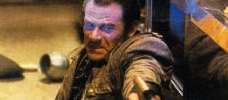
Trancers
1985 -
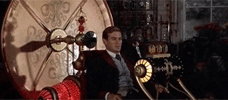
The Time Machine
1960 -

Groundhog Day
1993 -

Warlock
1989 -

The Navigator
1988 -
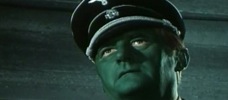
Tomorrow I’ll Wake Up and Scald Myself with Tea
1977 -
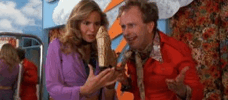
The Spirit of ‘76
1990 -
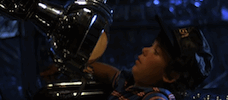
Flight of the Navigator
1986 -
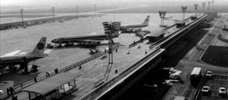
La jetée
1962 -
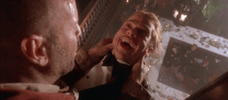
Twelve Monkeys
1995 -

Beastmaster 2: Through the Portal of Time
1991 -
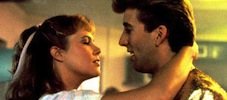
Peggy Sue Got Married
1986 -
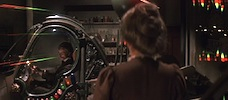
Time After Time
1979 -

Somewhere in Time
1980 -
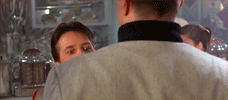
Back to the Future
1985 -

Back to the Future Part II
1989 -
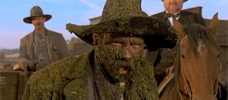
Back to the Future Part III
1990 -
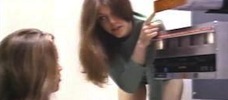
Idaho Transfer
1973 -
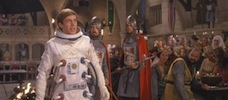
Unidentified Flying Oddball
1979 -

Slaughterhouse-Five
1972 -

The Lake House
2006 -
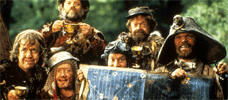
Time Bandits
1981 -
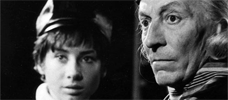
Doctor Who
1963–present -
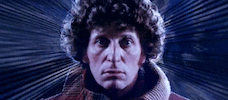
Doctor Who
1963–present
We don’t do comments anymore, but you may contact us here or find us on Twitter or Facebook.



